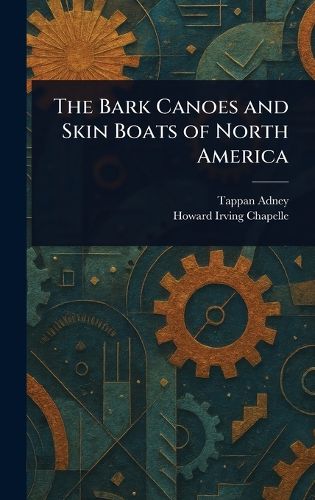Readings Newsletter
Become a Readings Member to make your shopping experience even easier.
Sign in or sign up for free!
You’re not far away from qualifying for FREE standard shipping within Australia
You’ve qualified for FREE standard shipping within Australia
The cart is loading…






This title is printed to order. This book may have been self-published. If so, we cannot guarantee the quality of the content. In the main most books will have gone through the editing process however some may not. We therefore suggest that you be aware of this before ordering this book. If in doubt check either the author or publisher’s details as we are unable to accept any returns unless they are faulty. Please contact us if you have any questions.
"The Bark Canoes and Skin Boats of North America" by Edwin Tappan Adney and Howard Irving Chapelle is a detailed exploration of traditional North American watercraft. This meticulously researched work delves into the construction and history of canoes and skin boats crafted by Native Americans across the continent.
A vital resource for maritime history enthusiasts, boatbuilding aficionados, and anyone interested in Native American technology, this book offers unparalleled insight into these ingenious vessels. Discover the techniques, materials, and cultural significance behind these enduring symbols of North American ingenuity. From birchbark canoes to various skin boat designs, the book provides a comprehensive overview of these remarkable achievements in boatbuilding. A classic work, this volume preserves essential knowledge of a bygone era.
This work has been selected by scholars as being culturally important, and is part of the knowledge base of civilization as we know it.
This work is in the public domain in the United States of America, and possibly other nations. Within the United States, you may freely copy and distribute this work, as no entity (individual or corporate) has a copyright on the body of the work.
Scholars believe, and we concur, that this work is important enough to be preserved, reproduced, and made generally available to the public. We appreciate your support of the preservation process, and thank you for being an important part of keeping this knowledge alive and relevant.
$9.00 standard shipping within Australia
FREE standard shipping within Australia for orders over $100.00
Express & International shipping calculated at checkout
This title is printed to order. This book may have been self-published. If so, we cannot guarantee the quality of the content. In the main most books will have gone through the editing process however some may not. We therefore suggest that you be aware of this before ordering this book. If in doubt check either the author or publisher’s details as we are unable to accept any returns unless they are faulty. Please contact us if you have any questions.
"The Bark Canoes and Skin Boats of North America" by Edwin Tappan Adney and Howard Irving Chapelle is a detailed exploration of traditional North American watercraft. This meticulously researched work delves into the construction and history of canoes and skin boats crafted by Native Americans across the continent.
A vital resource for maritime history enthusiasts, boatbuilding aficionados, and anyone interested in Native American technology, this book offers unparalleled insight into these ingenious vessels. Discover the techniques, materials, and cultural significance behind these enduring symbols of North American ingenuity. From birchbark canoes to various skin boat designs, the book provides a comprehensive overview of these remarkable achievements in boatbuilding. A classic work, this volume preserves essential knowledge of a bygone era.
This work has been selected by scholars as being culturally important, and is part of the knowledge base of civilization as we know it.
This work is in the public domain in the United States of America, and possibly other nations. Within the United States, you may freely copy and distribute this work, as no entity (individual or corporate) has a copyright on the body of the work.
Scholars believe, and we concur, that this work is important enough to be preserved, reproduced, and made generally available to the public. We appreciate your support of the preservation process, and thank you for being an important part of keeping this knowledge alive and relevant.